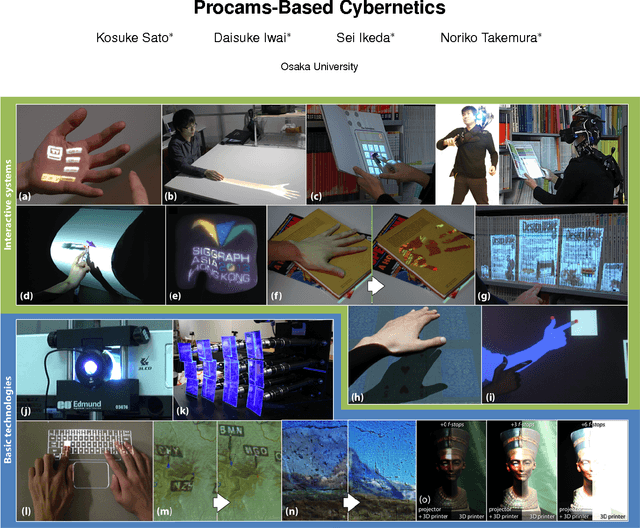Sei Ikeda
External Photoreflective Tactile Sensing Based on Surface Deformation Measurement
Nov 09, 2025Abstract:We present a tactile sensing method enabled by the mechanical compliance of soft robots; an externally attachable photoreflective module reads surface deformation of silicone skin to estimate contact force without embedding tactile transducers. Locating the sensor off the contact interface reduces damage risk, preserves softness, and simplifies fabrication and maintenance. We first characterize the optical sensing element and the compliant skin, thendetermine the design of a prototype tactile sensor. Compression experiments validate the approach, exhibiting a monotonic force output relationship consistent with theory, low hysteresis, high repeatability over repeated cycles, and small response indentation speeds. We further demonstrate integration on a soft robotic gripper, where the module reliably detects grasp events. Compared with liquid filled or wireembedded tactile skins, the proposed modular add on architecture enhances durability, reduces wiring complexity, and supports straightforward deployment across diverse robot geometries. Because the sensing principle reads skin strain patterns, it also suggests extensions to other somatosensory cues such as joint angle or actuator state estimation from surface deformation. Overall, leveraging surface compliance with an external optical module provides a practical and robust route to equip soft robots with force perception while preserving structural flexibility and manufacturability, paving the way for robotic applications and safe human robot collaboration.
Fixation-based Self-calibration for Eye Tracking in VR Headsets
Nov 01, 2023Abstract:This study proposes a novel self-calibration method for eye tracking in a virtual reality (VR) headset. The proposed method is based on the assumptions that the user's viewpoint can freely move and that the points of regard (PoRs) from different viewpoints are distributed within a small area on an object surface during visual fixation. In the method, fixations are first detected from the time-series data of uncalibrated gaze directions using an extension of the I-VDT (velocity and dispersion threshold identification) algorithm to a three-dimensional (3D) scene. Then, the calibration parameters are optimized by minimizing the sum of a dispersion metrics of the PoRs. The proposed method can potentially identify the optimal calibration parameters representing the user-dependent offset from the optical axis to the visual axis without explicit user calibration, image processing, or marker-substitute objects. For the gaze data of 18 participants walking in two VR environments with many occlusions, the proposed method achieved an accuracy of 2.1$^\circ$, which was significantly lower than the average offset. Our method is the first self-calibration method with an average error lower than 3$^\circ$ in 3D environments. Further, the accuracy of the proposed method can be improved by up to 1.2$^\circ$ by refining the fixation detection or optimization algorithm.
Procams-Based Cybernetics
Oct 09, 2015

Abstract:Procams-based cybernetics is a unique, emerging research field, which aims at enhancing and supporting our activities by naturally connecting human and computers/machines as a cooperative integrated system via projector-camera systems (procams). It rests on various research domains such as virtual/augmented reality, computer vision, computer graphics, projection display, human computer interface, human robot interaction and so on. This laboratory presentation provides a brief history including recent achievements of our procams-based cybernetics project.
 Add to Chrome
Add to Chrome Add to Firefox
Add to Firefox Add to Edge
Add to Edge